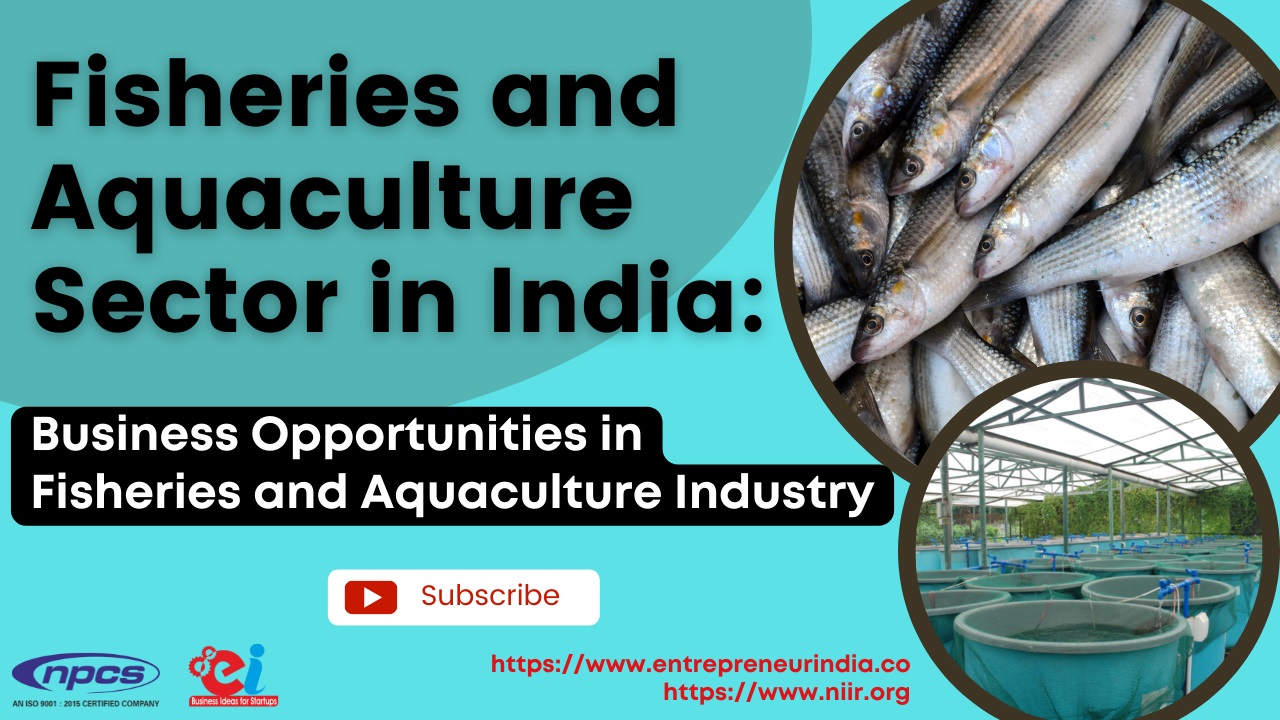India’s Rising Tide: The Growth of Fisheries & Aquaculture
India’s fisheries and aquaculture sector is witnessing a significant transformation, emerging as one of the fastest-growing and most profitable segments in the country’s agrarian economy. As the second-largest producer of fish in the world, India is not only fulfilling domestic demands but also boosting its export capabilities, thereby strengthening its global presence in the seafood trade.
A Snapshot of India’s Fisheries Landscape
The sector contributes more than 1% to the national GDP and over 7% to agricultural GDP. In the fiscal year 2022–2023, India’s total fish production crossed 17 million metric tonnes, with aquaculture accounting for more than 60% of this output. This rapid growth is driven by increasing investments, government incentives, and rising global demand for Indian seafood.
Aquaculture: The Engine Behind Growth
What is Aquaculture?
Aquaculture refers to the cultivation of aquatic organisms like fish, prawns, crabs, and mollusks in controlled environments such as ponds, tanks, or cages. It complements capture fisheries and ensures a sustainable supply of seafood.
Types of Aquaculture Practiced in India
- Freshwater Aquaculture: Dominated by Indian major carps like Rohu, Catla, and Mrigal.
- Brackish Water Aquaculture: Majorly consists of shrimp farming, especially the cultivation of Litopenaeus vannamei (whiteleg shrimp).
- Mariculture: Coastal farming of species such as cobia, sea bass, and mussels.
Government Initiatives Propelling the Sector
The Government of India, recognizing the potential of the fisheries and aquaculture industry, has introduced a series of transformative schemes:
Pradhan Mantri Matsya Sampada Yojana (PMMSY)
Launched with an investment of ?20,050 crore, PMMSY aims to:
- Enhance fish production to 22 million metric tonnes by 2024–25
- Double fisheries exports to ?1 lakh crore
- Improve fishers’ income through modern infrastructure and cold chains
Blue Revolution Program
This initiative focuses on:
- Sustainable development of the fisheries sector
- Better marketing and supply chain mechanisms
- Encouraging private investments and innovations
Employment Opportunities and Economic Impact
India’s fisheries and aquaculture industry provides livelihood to over 28 million people, including fish farmers, traders, processors, and workers in ancillary services. It serves as a key driver of rural employment, especially in coastal and tribal regions.
Micro and Small-Scale Enterprises (MSMEs)
The rise of MSMEs in fish processing, packaging, and export is contributing immensely to the sector’s economic footprint. The growing demand for value-added products like fish fillets, fish pickles, and ready-to-eat seafood snacks is opening new revenue streams.
Export Market: Riding the Global Wave
India’s fish and seafood exports reached over ?57,586 crore in 2022–23, with the United States, China, Japan, and Southeast Asia being the primary markets. Shrimp remains the dominant export item, comprising nearly 70% of total marine exports.
Key Export Species
- Vannamei Shrimp
- Black Tiger Shrimp
- Ribbon Fish
- Pomfret
- Cutlassfish
The Marine Products Export Development Authority (MPEDA) plays a pivotal role in enhancing India’s competitiveness through quality control, certification, and international promotion.
Technological Advancements in Aquaculture
Biofloc Technology
Biofloc is a revolutionary aquaculture practice that allows high-density fish farming in limited water volumes, reducing the need for frequent water exchanges. It enhances productivity, reduces feed costs, and is eco-friendly.
Recirculating Aquaculture Systems (RAS)
RAS uses filtered and recirculated water in closed tanks to rear fish, ideal for urban and land-scarce areas. It offers excellent water conservation and biosecurity.
Digital Aquaculture
Use of IoT sensors, AI-based monitoring tools, drones, and mobile apps is helping fish farmers monitor water quality, feeding schedules, and fish health in real-time. This reduces losses and improves yield.
Sustainability and Environmental Concerns
While fisheries and aquaculture contribute significantly to food security and employment, they must also align with sustainable practices to avoid ecological degradation.
Key Focus Areas
- Use of certified seed and feed
- Avoiding antibiotic overuse
- Efficient waste management
- Promoting polyculture and integrated farming
The National Fisheries Development Board (NFDB) works actively to encourage best practices and environmental compliance in aquafarming.
Challenges Hindering the Sector
Despite rapid progress, the sector faces several challenges:
- Lack of quality seed and feed supply
- Disease outbreaks in fish and shrimp farming
- Post-harvest losses due to inadequate infrastructure
- Low awareness among small-scale farmers
Resolving these issues through capacity building, funding support, and technological integration is crucial for long-term sustainability.
Future Outlook: Tapping Untapped Potential
With India’s extensive 7,516 km coastline, rich inland water resources, and government backing, the fisheries and aquaculture sector is poised to grow exponentially.
Key Growth Drivers
- Rising global demand for protein-rich seafood
- Increasing domestic consumption
- Favorable government policies
- Expansion of cold chain and logistics
- Adoption of high-tech farming methods
How Entrepreneurs Can Enter This Booming Sector
The sector is now open for young entrepreneurs, agritech startups, and private investors. Some profitable business ideas include:
- Biofloc fish farming
- Shrimp hatcheries
- Ornamental fish breeding
- Fish feed production
- Cold storage and seafood processing units
Startups that incorporate sustainable models and innovation can not only tap into large profits but also contribute to India’s food and employment security.
Conclusion: India’s Aquatic Goldmine
The fisheries and aquaculture sector in India is more than just a food industry—it’s a vibrant, fast-evolving economic engine that supports millions and contributes substantially to GDP and exports. With abundant natural resources, strong government backing, and technological innovations, this sector is truly a booming business opportunity for investors, entrepreneurs, and rural communities alike.
Visit the page Select and Choose the Right Business Startup for You for sorting out the questions arising in your mind before starting any business and know which start-up you can plan.
We, at NPCS, endeavor to make business selection a simple and convenient step for any entrepreneur/startup. Our expert team, by capitalizing on its dexterity and decade’s long experience in the field, has created a list of profitable ventures for entrepreneurs who wish to diversify or venture. The list so mentioned is updated regularly to give you a regular dose of new emerging opportunities.






